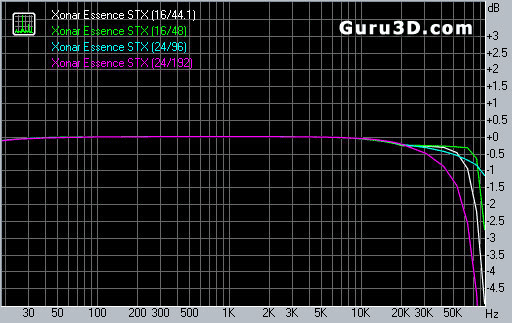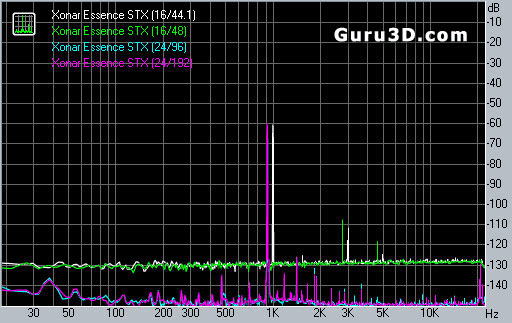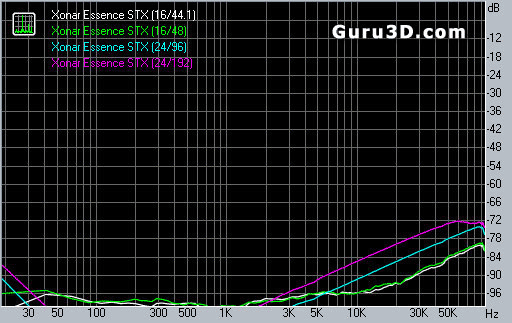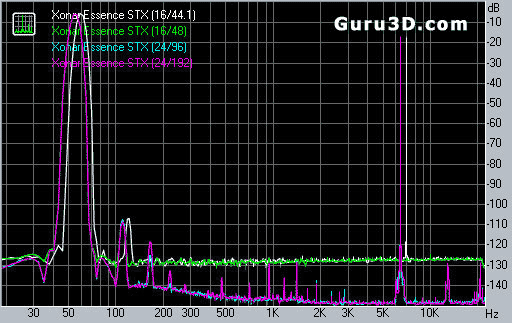Synthetic testing - RMAA
Right Mark Audio Analyzer (RMAA) Tests
The Right Mark audio analyzer has become a bit of staple in soundcard reviews and it is a great tool if the user knows the proper procedure for getting usable results and knowing how to properly interpret the final results. Below are tests of the Essence STX card in loopback mode meaning, the cards output is looped back to the input section and we use the recording section to gauge the quality of the playback section.
The cards output section surpasses the input section so the results will reflect the added distortion measurements of both sections. Furthermore, the results will reflect the limits of the recording section and will show us the quality of the playback section only where the fall within the specifications of the recording ADC chip.
Frequency Response

This graph shows the output characteristics of the Xonar Essence STX. The more linear the graphed line is the more transparent and neutral the cards audio output is. Variances in the graph would produce color in that particular frequency range producing output higher or lower than the remaining frequencies. The Essence STX has a very linear frequency response across the test set.
Dynamic Range

This graph shows the card's operating range and the graphs illustrate the lowest and highest range the card is capable of producing accurately. The STX has an excellent dynamic range across all the tested ranges.
THD+N
.png)
This measurement indicates how much Total Harmonic Distortion and Noise is present in the cards output signal. Harmonic distortion presents itself as multiple odd and/or even harmonic overtones in the original signal. The lower the measurement the better and the STX has a very low THD+N measurements across the test set.
Stereo Crosstalk

This graph is a measurement of the bleed-through effect from one stereo channel to the other. The lower the measured crosstalk values are the less bleed through. On our measured graph, at 24bit 96,196 the crosstalk cannot be measured in the lower frequencies although in the higher range they elevate up a little. The Essence STX has excellent measurements for stereo crosstalk.
Intermodulation Distortion

This graph shows the measurement of IMD. This type of distortion results from multiple signals being mixed together and producing distortion in the form of overtones that are not harmonically linked to any of the base signals. Lower measurements are definitely preferred for any type of distortion measurements. The lower the measurements the better and the Essence STX produced excellent IMD measurements across the test set.
Noise Level

The above graph shows the level of noise present in the cards output signal. There will always be some level of noise present in a audio device but in many cases the level is so low that it is not audible to the human ear. The Essence STX has excellent noise measurements across the test set.
